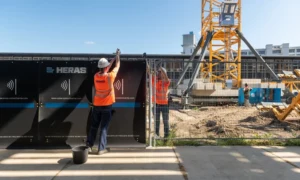The automotive industry, a dynamic and ever-evolving landscape, places dealerships at the forefront of economic shifts, technological advances, and consumer demands. Within this challenging environment, the term “bankruptcy” has traditionally been associated with failure and decline. However, a notable trend is emerging as some dealerships not only weather the storm of financial distress but embrace bankruptcy as a catalyst for transformative comebacks. In this comprehensive exploration, we will delve into the multifaceted strategies and success stories of dealerships that have successfully navigated bankruptcy, proving that it’s possible to drive forward, not back, after facing financial turmoil.
Understanding the Challenge:
Bankruptcy, often precipitated by economic downturns, shifting market dynamics, and unforeseen challenges, is a complex and multifaceted challenge for any business, including automotive dealerships. In the face of such adversity, dealerships must exhibit resilience, adaptability, and strategic thinking. Instead of succumbing to the stigma surrounding bankruptcy, forward-thinking dealerships are leveraging this critical juncture to initiate transformative changes that go beyond mere survival.
Strategic Restructuring:
At the heart of successful dealership comebacks is strategic restructuring. Rather than viewing bankruptcy as an insurmountable obstacle, progressive dealerships perceive it as an opportunity to reevaluate and reconfigure their business models comprehensively. This involves a meticulous examination of their operational structure, cost centers, and revenue streams.
Strategic restructuring encompasses a range of measures, including optimizing inventory management, right-sizing the workforce, and renegotiating contracts with suppliers. By identifying and addressing underlying issues that led to bankruptcy, these businesses not only survive the immediate financial crisis but emerge as leaner, more agile organizations capable of thriving in a competitive automotive market.
Moreover, strategic restructuring goes beyond mere cost-cutting; it involves a holistic approach to enhancing operational efficiency. Forward-thinking dealerships leverage data analytics to gain insights into consumer behavior, market trends, and inventory performance. This data-driven approach enables them to make informed decisions, ensuring that every aspect of their operations aligns with market demands and consumer expectations.
Adapting to Digital Trends:
In an era defined by rapid technological advancements, the automotive industry is undergoing a digital transformation that demands the active participation of dealerships. Recognizing the significance of this paradigm shift, dealerships undergoing bankruptcy comebacks are quick to adopt digital trends to remain relevant in the eyes of the modern consumer.
The adoption of online sales platforms, virtual showrooms, and augmented reality experiences is becoming increasingly common among forward-thinking dealerships. These digital tools not only extend the reach of dealerships to a broader audience but also enhance the overall customer experience. Buyers can now explore and customize vehicles from the comfort of their homes, and transactions can be streamlined through secure online platforms.
Additionally, digital marketing strategies, including social media engagement and targeted advertising, play a pivotal role in re-establishing a dealership’s presence in the market post-bankruptcy. Dealerships leverage data analytics to understand consumer preferences, enabling them to tailor marketing campaigns that resonate with their target audience. The result is a renewed and dynamic online presence that contributes to the overall success of the dealership’s comeback.
Customer-Centric Approaches:
Successful dealership comebacks are characterized by a fundamental shift towards customer-centric approaches. Understanding the evolving needs and expectations of consumers is paramount in regaining trust and loyalty, especially in the aftermath of bankruptcy. Dealerships undergoing comebacks prioritize transparency in pricing models, providing detailed information about the purchasing process, and offering flexible financing options.
Moreover, the post-bankruptcy phase emphasizes the importance of customer service as a cornerstone of success. Timely communication, personalized interactions, and an emphasis on post-sale support contribute to an enhanced customer experience. Dealerships are investing in training programs to ensure that their staff is equipped to provide excellent service, turning every customer interaction into an opportunity to rebuild the dealership’s reputation.
Creating a customer-centric culture involves fostering a sense of empathy and understanding within the organization. Employees are encouraged to view each customer interaction as a valuable touchpoint, an opportunity to not only make a sale but to build a lasting relationship. This customer-centric approach extends beyond the transactional phase, creating brand advocates who, in turn, contribute to positive word-of-mouth marketing.
Collaboration with Financial Institutions:
Navigating bankruptcy often necessitates close collaboration with financial institutions. Dealerships leading successful comebacks forge strategic partnerships with lenders, exploring innovative financing solutions that align with both short-term recovery and long-term sustainability goals. This collaborative approach is not just a financial necessity but a strategic move that demonstrates a commitment to financial stability and responsible business practices.
These collaborations extend beyond securing funding; they involve open and transparent communication with financial partners. Dealerships share their restructuring plans, operational adjustments, and financial forecasts to build trust and garner support. This collaborative effort ensures that both parties are aligned in their objectives, fostering a symbiotic relationship that extends beyond the recovery period.
Furthermore, successful dealerships view financial institutions as more than just lenders; they see them as strategic allies in navigating the complex landscape of post-bankruptcy recovery. Together, they explore innovative financing models, such as revenue-sharing agreements and flexible repayment structures, that not only address the immediate financial challenges but lay the foundation for long-term financial stability.
Employee Engagement and Training:
While operational and financial restructuring are critical components of a successful comeback, the human element is often underestimated. Employee engagement and training programs play a pivotal role in creating a culture of resilience and adaptability within the organization.
During the restructuring phase, clear and transparent communication with employees is crucial. Open discussions about the challenges at hand, the restructuring process, and the vision for the future foster a sense of ownership and commitment among the staff. Employees become integral contributors to the dealership’s recovery, understanding that their efforts directly impact the success of the organization.
Investing in employee training programs is equally essential. The automotive industry is undergoing rapid technological advancements, and employees must be equipped with the skills necessary to navigate this evolving landscape. Training programs encompass not only technical skills related to the products and services offered by the dealership but also soft skills that enhance customer interactions and teamwork.
Moreover, successful dealerships view employee engagement as an ongoing process. Recognition programs, feedback mechanisms, and opportunities for professional development contribute to a positive work environment. Employees who feel valued and supported are more likely to exhibit resilience in the face of challenges, actively contributing to the dealership’s overall success.
Conclusion:
The evolving narrative surrounding dealership bankruptcies is undergoing a transformation from one of defeat to one of triumph. Dealerships that have successfully navigated and embraced comebacks are proof that adversity can be a stepping stone to greatness. By strategically restructuring, adapting to digital trends, prioritizing the customer experience, collaborating with financial institutions, and investing in employee engagement and training, these trendsetting dealerships are not merely recovering; they are driving forward into a new era of success.
The key takeaway is clear: facing bankruptcy is not the end of the road for dealerships; it’s an opportunity to pave a new, more resilient path to prosperity. As the automotive industry continues to undergo transformative changes, those dealerships that proactively embrace innovation and strategic reinvention are poised not only to survive but thrive in the years to come. The future of automotive retail belongs to those who can navigate the challenges, learn from the past, and drive forward with a renewed sense of purpose and resilience.










































